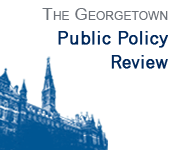Through recent legislation and reworking funding formulas, President Obama has made a move to promote the investment and development of light rail, speed train and other mass transit initiatives. The legislation has come after long debates surrounding the practicality and cost-effectiveness of these forms of transportation.
The President’s plan was released in 2009 following the passage of the stimulus package earlier in the year, and was addressed again this month. The plan entails a number of initiatives to develop light rail and street car lines in major cities across the country. Focus will be taken off strict cost-effectiveness models and shifted toward values such as community building and energy efficiency. Investment in between-city commuter trains will be reallocated to more local oriented travel. The idea is that by coordinating efforts with other agencies, people can live and work in the same area and community centers can be developed. This new emphasis has been outlined by the Obama team and executed through a number of funding sources including the stimulus bill.
In addition to the initial stimulus funding invested in these systems, Obama’s transportation policy will be reflected in the spending of the Federal Transportation Administration’s annual budget. Their $2 billion a year budget will now be more frequently funneled to street car and commuter bus projects across the country. This change is a drastic shift from the Bush Administration’s transportation policy that not only avoided investment in this area, but stymied many existing projects on the grounds of failing to be the least expensive way of reducing traffic. The funding formulas previously in place came down to a numbers game involving the cheapest way to move the highest number of people in the least amount of time. Beneficial aspects such as aesthetic appeal, economic development, community building and emission rates were not taken into account. Now that budget constraints placed on the transportation agency have been lifted and funding formulas reworked, the agencies can refocus on initiatives some say are long overdue.
Obama hopes the new policy direction will foster a more involved relationship between the Federal Transportation Administration and the Department of Housing and Urban Development. He envisions the two coordinating efforts to provide jobs and housing near public transportation, and develop communities around new street car lines.
Interstate light rails are also getting some attention. Obama’s transportation policy also entailed an additional aspect focused around innovation and long distance travel. California and potentially others are being assessed as future locations of high speed light rail lines. With a growing need to transport goods and people long distances and the growing concern surrounding gasoline consumption, this policy could not come at a better time. However, the costs associated with the systems implementation are daunting and some challenge that it’s worth the price.
Established in 1995, the Georgetown Public Policy Review is the McCourt School of Public Policy’s nonpartisan, graduate student-run publication. Our mission is to provide an outlet for innovative new thinkers and established policymakers to offer perspectives on the politics and policies that shape our nation and our world.
